Te Arai Golf Links - North
Courses and Architecture
To start, let me say that writing about courses as an employee of Fried Egg Golf is TOTALLY NOT nerve-wracking. I'm DEFINITELY NOT worried my colleagues will silently judge me and discover I'm an idiot. But this forum is new and someone had to break the ice in this category, so here we are.
I visited New Zealand in March 2025 to celebrate my birthday, ending the trip with three nights at Te Arai. For those unfamiliar with the property, it's almost impossible to describe how wonderful everything is. First and foremost, New Zealand is incredible—I would move there in a heartbeat. More specifically, Te Arai is a magnificent resort featuring two world-class courses. Unlike many top American golf resorts (Bandon Dunes, Sand Valley, Pinehurst), Te Arai leans toward luxury. Given its semi-private nature, many amenities cater to international members with deep pockets. The restaurants are splendid, the facilities world-class, and the crowds minimal—one course is dedicated mostly to member play each day while the other serves guests. This model alone ensures you'll never feel the buzz of people that permeates the big American resorts.
The Golf
I won't opine on architectural merits or analyze features in the ground. Instead, I'll focus on my experience navigating the wonderfully fun course Tom Doak and his team built.
In an overly reductive take (based mostly on the combination of sand and forest), I'd say this course is what I wish Spyglass could be. It begins near the ocean in dunesland, climbs a hill into forest (mostly clear-cut), then returns to the coast for a dramatically fun finish. The holes vary greatly and demand different shots to succeed. The green complexes are big, bold, and contoured aggressively—which I loved. The topographic map and routing below (from Te Arai's website) shows what I believe is an outdated proposal for the layout. I've outlined the holes in the order I played them below.
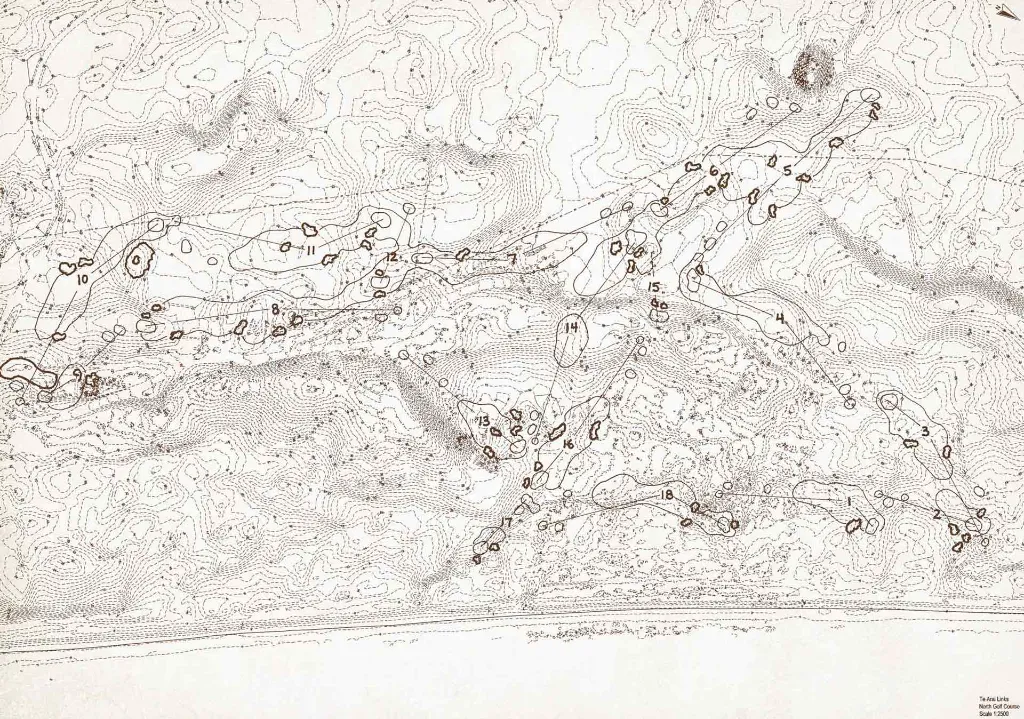
Correct hole ordering using labels on the map 1, 2, 3, 4, 5, 6, 15, 16, 14, 7, 8, 9, 10, 11, 12, 13, 17, 18
As you might expect, I'd been anticipating this trip for months. I wanted to scour the internet for pictures and learn everything about the place. But I also wanted to preserve some mystery—to let the course surprise me. In an age where few things remain unknown, I enjoy playing courses without extensive research, allowing the architecture to unfold naturally and evoke feelings I might not experience if I knew every bump, bounce, or visual deception. So I mostly stuck to Te Arai's website, using only the simple topo map to build anticipation.
When I first studied the map, three areas jumped out: holes 5 and 6 (the hill), the cluster of greens at holes 4, 6, 7, and 9 converging into a depression, and hole 17. I correctly assumed that a short par three heading toward the water near the end of the round would be visually stunning, and Doak's team delivered. The green appears perched on a platter above the ocean with fun contouring that rewards shots worked in from the right while penalizing anything too aggressive left.
Favorite Holes
Hole 1
A short par 4 (roughly 290 yards) that immediately offers options. Long hitters can try to drive the green, or play the conventional shot: aim for left-center of the generous fairway and leave a short iron in. I loved this opener. The setting is sublime—you're offset from the putting green which is attached to the 18th, and the hole runs adjacent to the ocean, providing killer views.
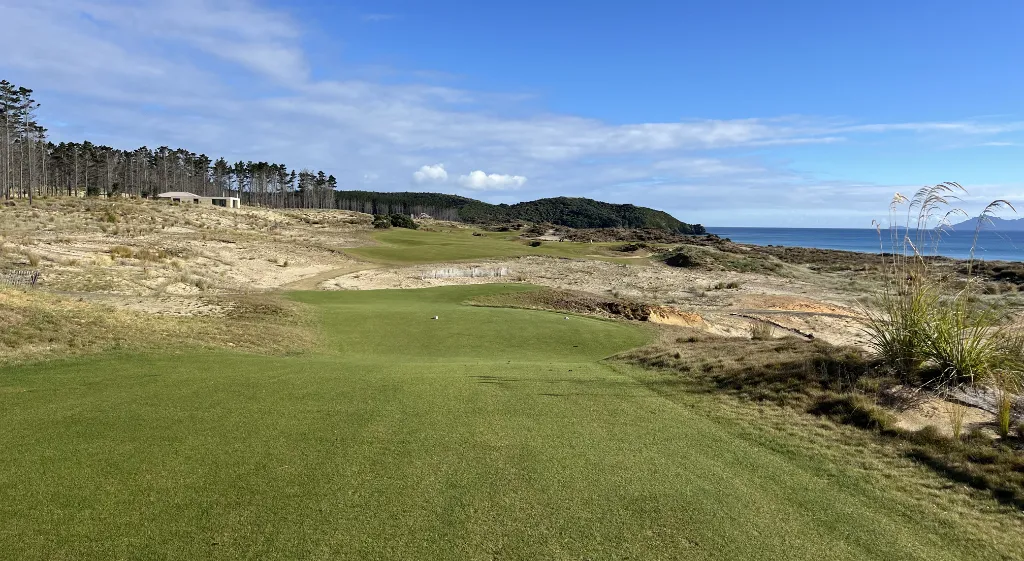
Hole 2
This hole won't make most people's lists of favorites, but I have an irrational affection for green sites that remain highly interesting without bunkers (there's technically one behind the green, but I'd take the under on 1.5 balls landing in it daily). The contouring can dramatically amplify errant shots depending on pin placement. Paired with the first hole, it's a fun one-two punch to start the round.
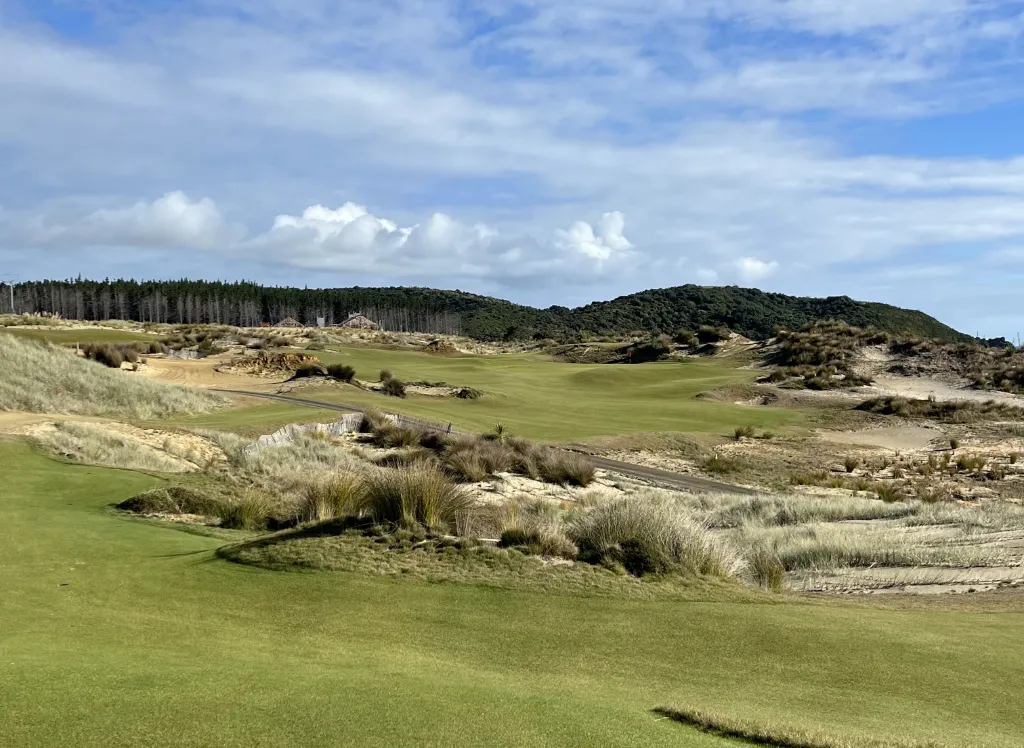
Side note: While holes 1 and 2 featured engaging greens, the complexity really escalates from this point forward.
Hole 4
A brute of a long par 4, this hole opens with visual deception off the tee—a perfectly placed bunker grabs your eye as you tee up you ball. While in play, the bunker isn't a major factor if you give your drive a good ride. Mishit it and you're in trouble. The hole's defining feature is the approach into what I consider the wildest green on the property. The green has two distinct shelves—left and right—with the right side 4-5 feet higher than the left, connected by a frighteningly steep, short slope. If the pin is on the lower left shelf and you miss right onto the high side, you have zero chance of stopping a putt within 20 feet. The silver lining: the course gives you ample opportunity to play conservatively to the left. There aren't many hazards or bunkers near the green—aside from the massive connecting slope, there's not much else to worry about. But as humans, just like that bunker off the tee that shouldn't haunt you, the two-tiered green puts immense pressure on your approach. I had a blast playing this hole on every loop.
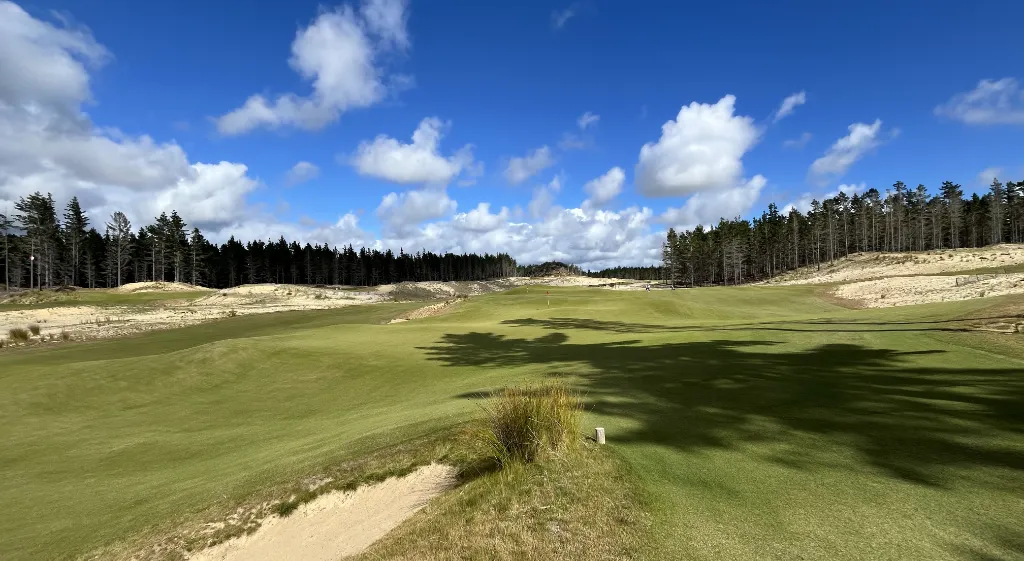
The fourth green is in the background of this photo and if you look closely you can see the two distinct shelves.
Hole 6
Tumbling down the hill you climbed on the 5th, the 6th starts with a fun elevated tee shot to a generous fairway and culminates with another exceptional green. From the fairway, the green is almost completely obscured by a fronting mound. But the shot isn't as difficult as you might think. A sizable mound behind the green funnels long shots back onto the putting surface. This type of feature—one that seems harder than it actually is—ranks among my favorites when playing a course for the first time. The magic doesn't vanish on repeat plays, but when you hit the shot that uses the feature to guide you back and didn't fully trust it would work, it's such a rewarding feeling. It's a tactic that can become rote if overused, but I love when architects give you one or two per round. There's something deeply satisfying about combining mental planning (hit it long into the back hill) with physical execution (actually hitting the shot you envisioned) that's far more stimulating than mindlessly executing a perfect shot.
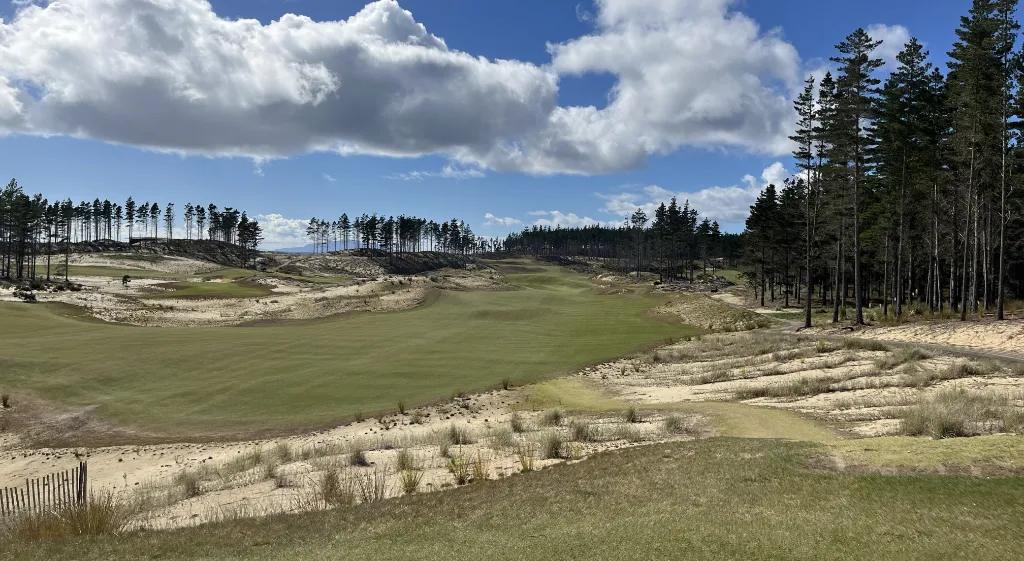
The elevated tee shot at the 6th

The 6th green tucked behind the fronting mound.
Hole 17
I should note there are plenty of world-class holes from 7-16, but I didn't gravitate toward them as much during my rounds. The 17th, however, was hotly anticipated and delivered. Looking at the course map, I was excited to see how Tom and his team treated a short par 3 on such prime land. They definitely delivered. On the calm days I played, the hole was manageable, though I imagine it becomes a beast depending on wind strength and direction. The hole maxes out at 166 yards, so it's not overly long. The green features fun contouring that feeds shots hit right back toward the center, but go too far right and you're stuck behind a mound that makes an up-and-down virtually impossible. Ultimately, you're so awestruck by the scene's beauty that little else is needed.
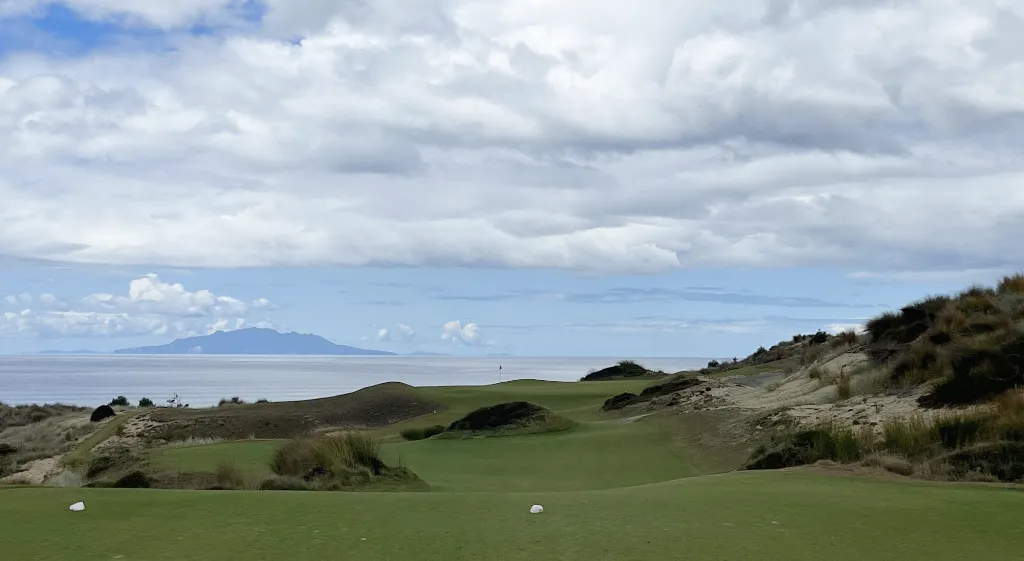
Closing Thoughts
Te Arai is a special place. The combination of two world-class courses by two all-time great architects is hard to beat. Add the exceptional amenities and it's a can't-miss destination. I've read several write-ups and heard plenty of chatter at the resort claiming the north course is tougher or trickier. I'm not sure I agree. The south course, which I've also written about, has the typical Coore and Crenshaw restraint and polish, but their design will politely put you in a blender. I almost found the north course easier to play given its bold, obvious obstacles to overcome. However you feel about the two courses and how they compare to one another, consider yourself blessed if you get to play them.
Engage in our content with thousands of other Fried Egg Golf Club Members
Engage in our content with thousands of other Fried Egg Golf Club Members








Leave a comment or start a discussion
Lorem ipsum dolor sit amet, consectetur adipiscing elit. Suspendisse varius enim in eros elementum tristique. Duis cursus, mi quis viverra ornare, eros dolor interdum nulla, ut commodo diam libero vitae erat. Aenean faucibus nibh et justo cursus id rutrum lorem imperdiet. Nunc ut sem vitae risus tristique posuere. uis cursus, mi quis viverra ornare, eros dolor interdum nulla, ut commodo diam libero vitae erat. Aenean faucibus nibh et justo cursus id rutrum lorem imperdiet. Nunc ut sem vitae risus tristique posuere.